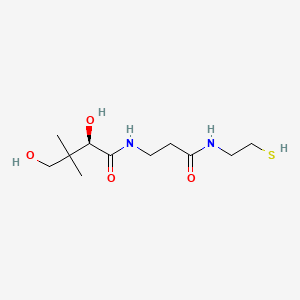The WaPo writes (not behind paywall) about another step in the quest to understand how life evolved out of non-life on Earth. This is an interesting discovery of the spontaneous creation of an important complex molecule (pantetheine) that scientists did not believe would exist if life had not evolved.
Specifically, Powner and his team were looking to re-create a particular fragment of the coenzyme A molecule called pantetheine. Pantetheine is the functional arm of coenzyme A, often getting transferred and enabling other chemical reactions in our body to occur. This limb is called a co-factor and acts as an “on” switch — without it, the coenzyme would be unusable.
Some researchers, Goldman said, have proposed that early lifeforms could have used pantetheine to store energy before the evolution of the larger, more complex energy currency that cells use today.
If this is the case, the mystery stood: Where did pantetheine come from?
“All of our metabolic processes rely on a small subset of these co-factors,” said biologist Aaron Goldman, who was not involved in the study. “This has led researchers to argue that these co-factors, themselves, may have predated larger, more complex enzymes during the origin and early evolution of life.”
Some researchers, Goldman said, have proposed that early lifeforms could have used pantetheine to store energy before the evolution of the larger, more complex energy currency that cells use today.
If this is the case, the mystery stood: Where did pantetheine come from?
The compound is such an odd duckling that scientists previously proposed it was too intricate to make from basic molecules. Others have tried to create pantetheine and failed, thinking that it wasn’t even present at life’s origins. Many scientists thought biology would have created a simple version of it, which would have evolved to become more complicated over time — like building a shack and later turning it into a mansion.
The team took to the lab. They focused on primarily using materials that could have been abundant on early Earth, like hydrogen cyanide and water. The first few steps of the reaction each took about a day, but the final step lasted 60 days, which was the longest reaction that Powner’s lab has ever done. The team finally shut off the reaction “partly because we got bored,” he said. But the result was a lot of pantetheine.
Pantetheine
The experts did not think this could
form without life to create it
The experts were wrong
I can now much more clearly envision how life arose from non-life on Earth. Stable climate, lots of water and millions of years for chemical reactions. This is more evidence suggesting that is how life arose here. Not from God, but from chemistry under the right conditions for a heck of a long time.


No comments:
Post a Comment